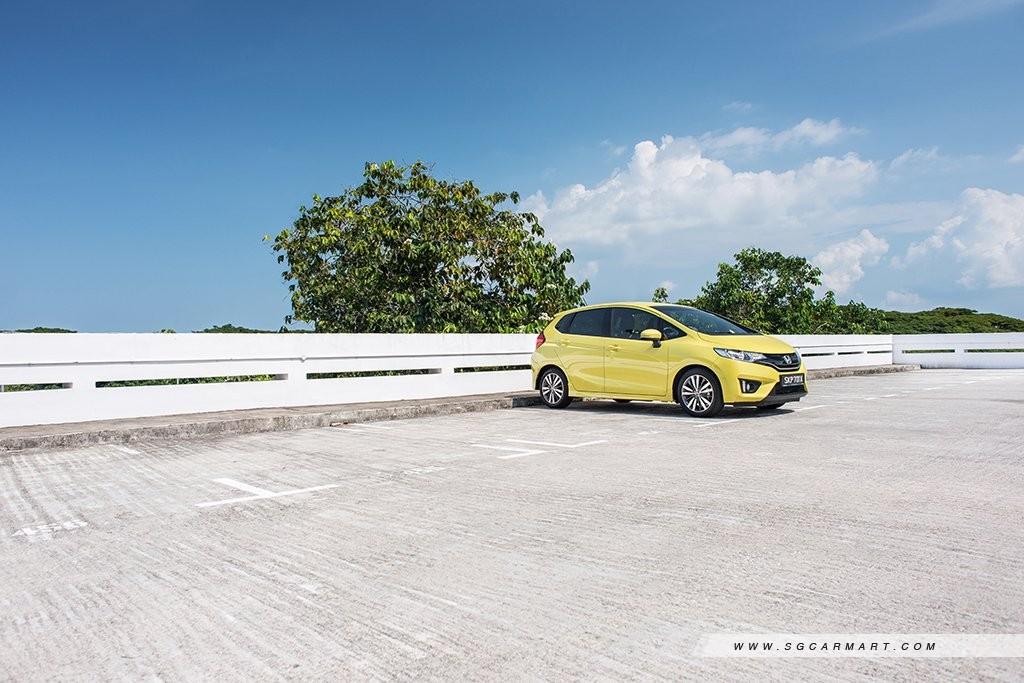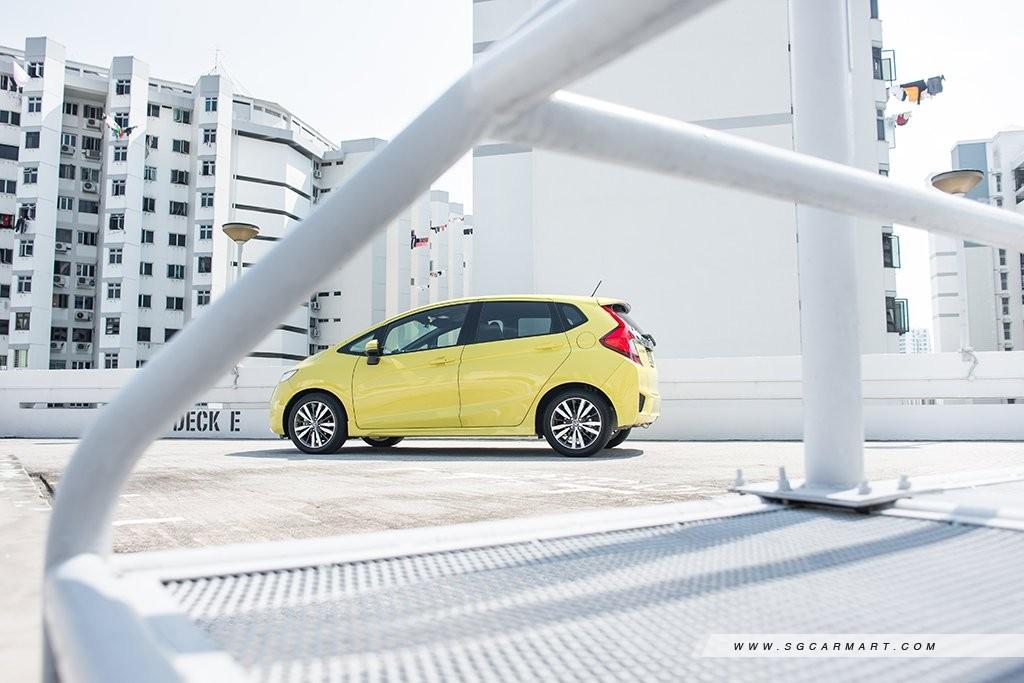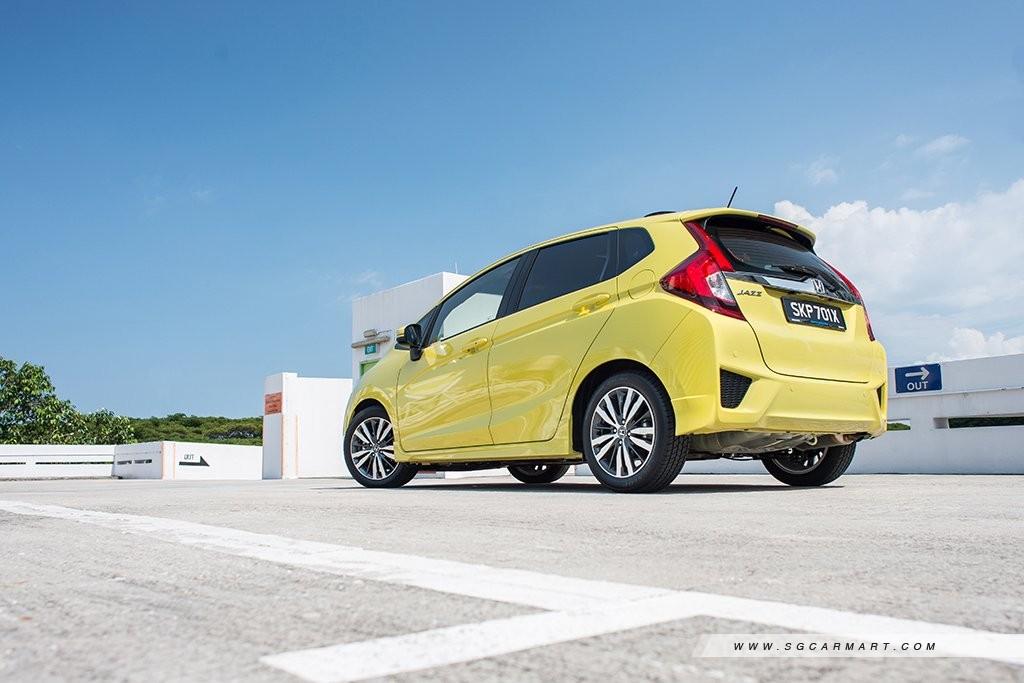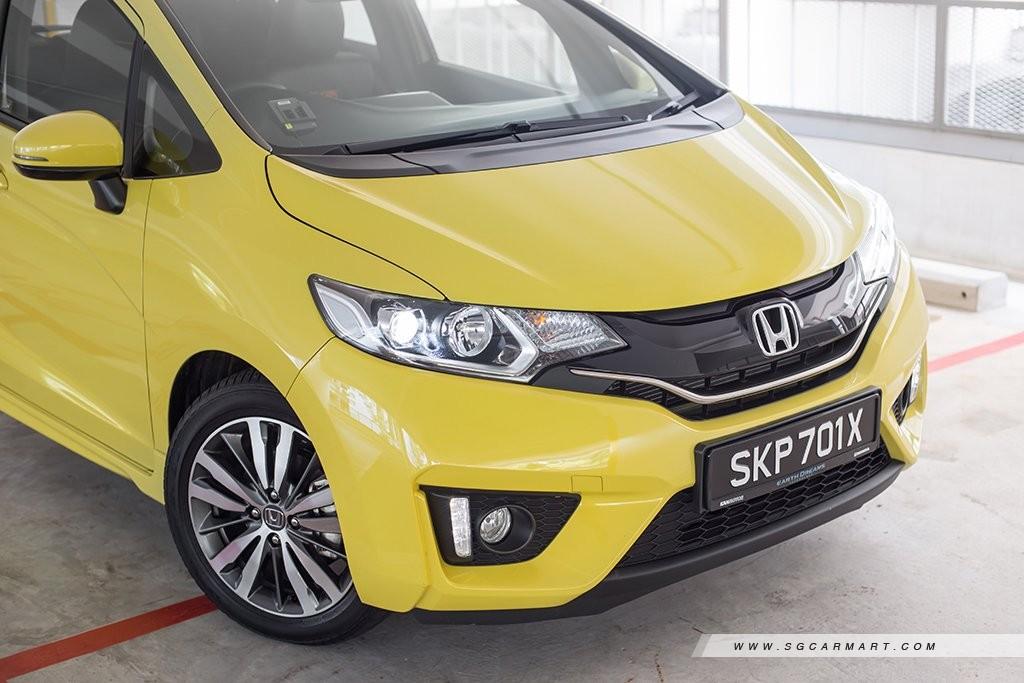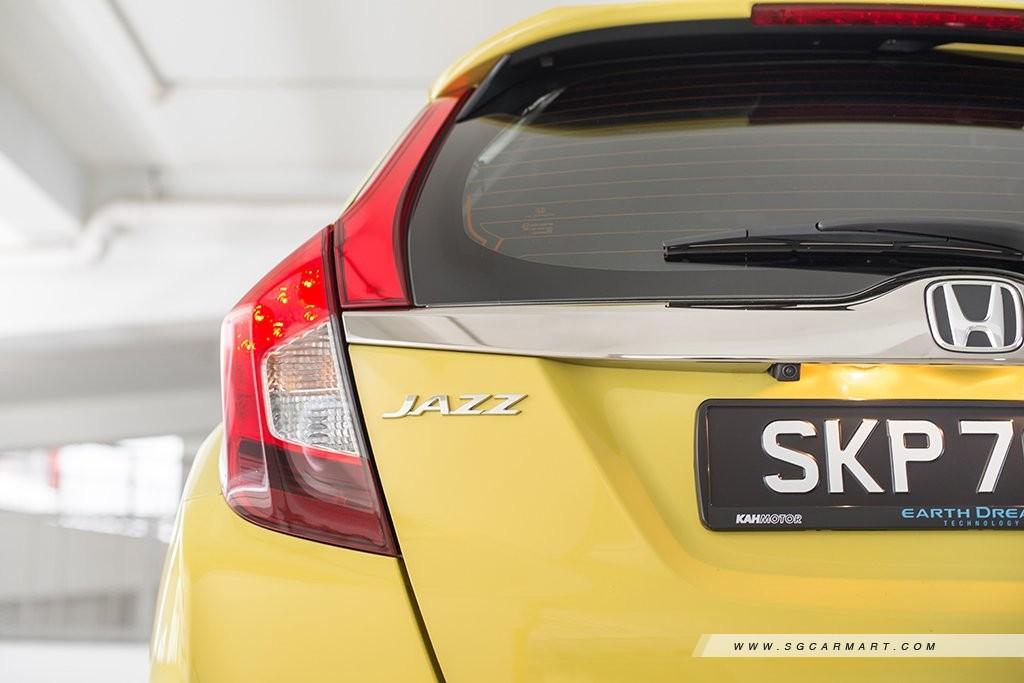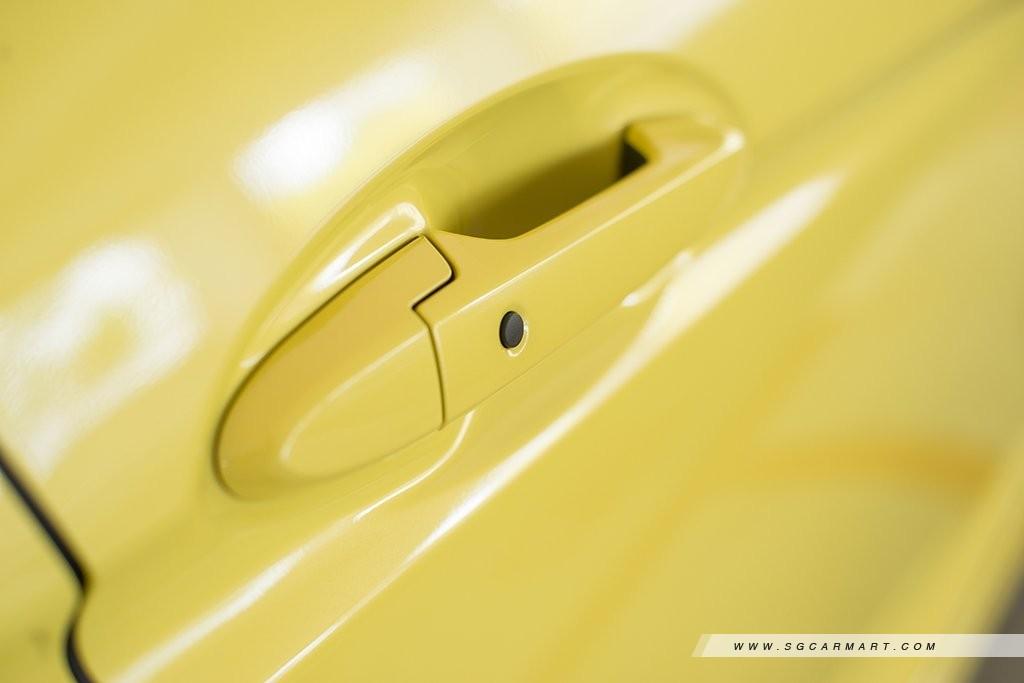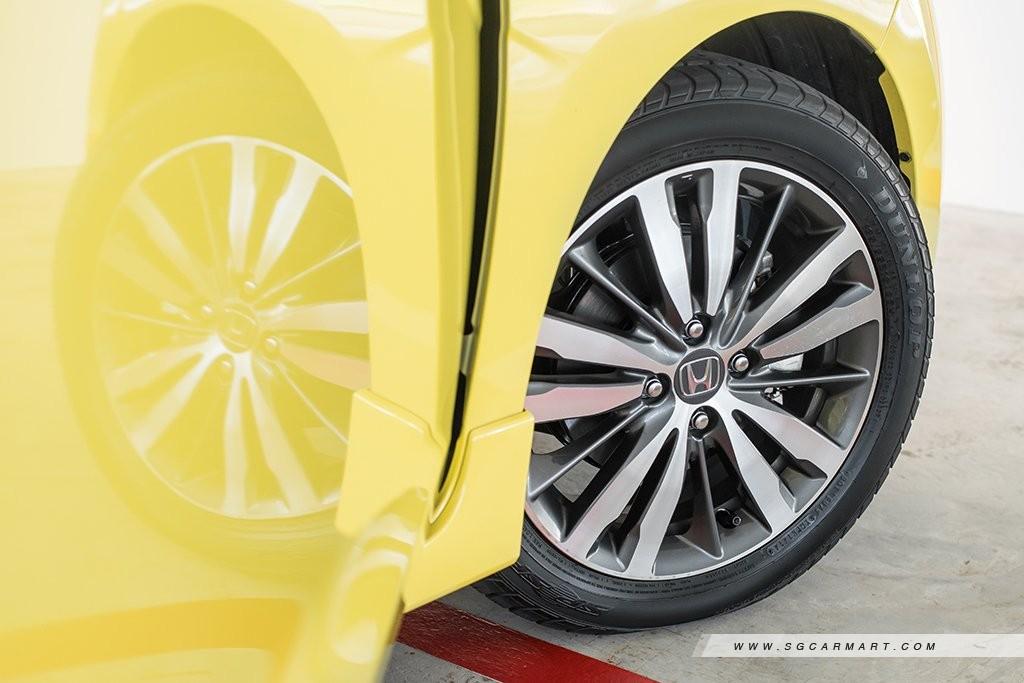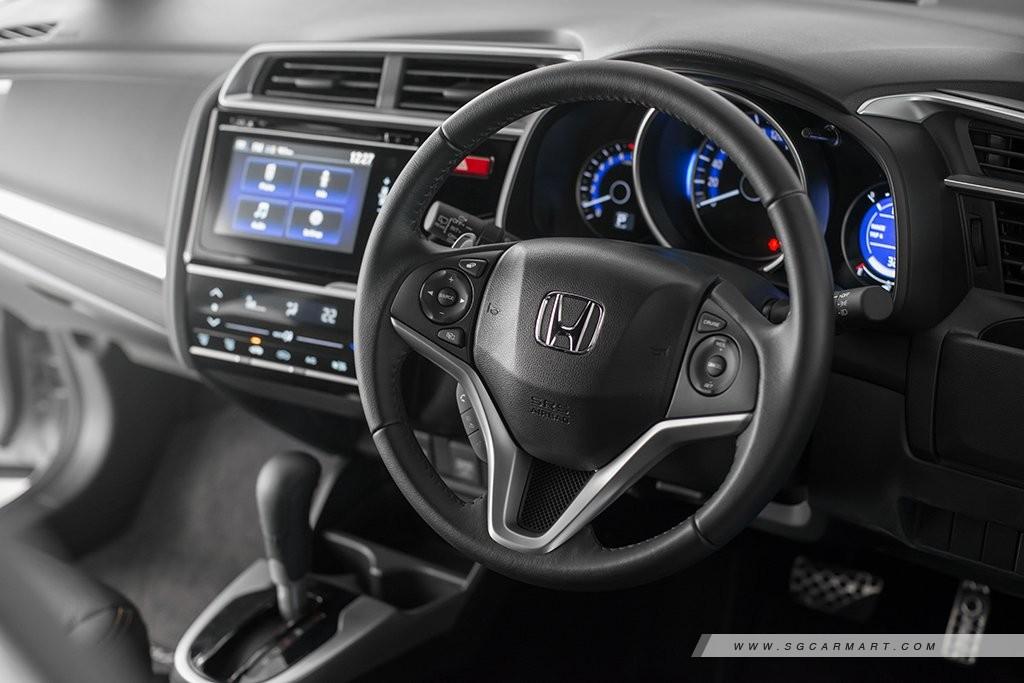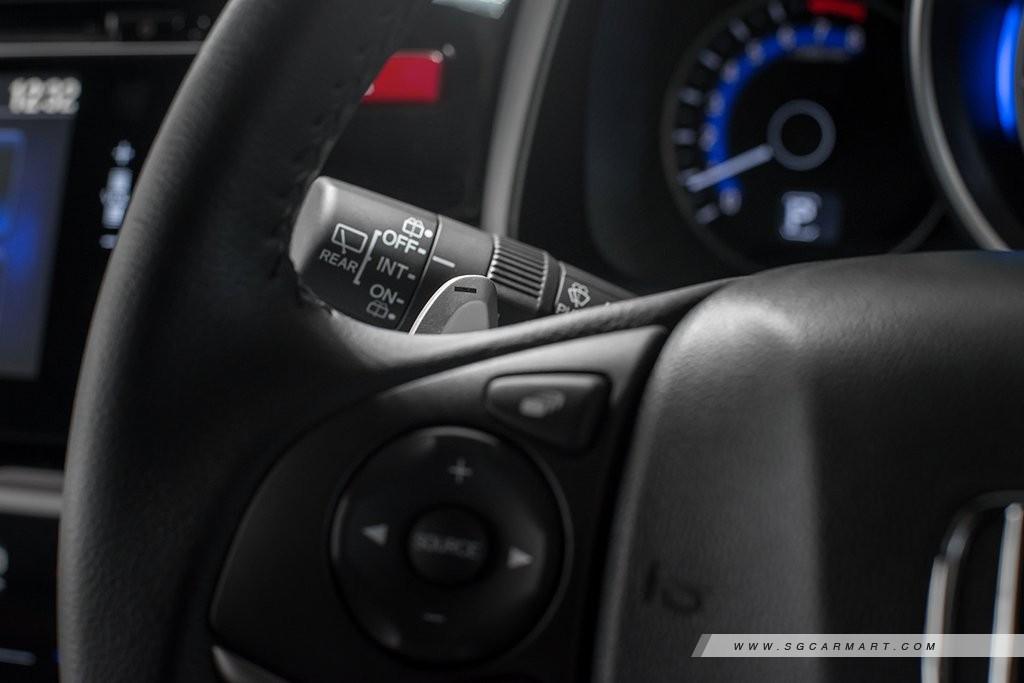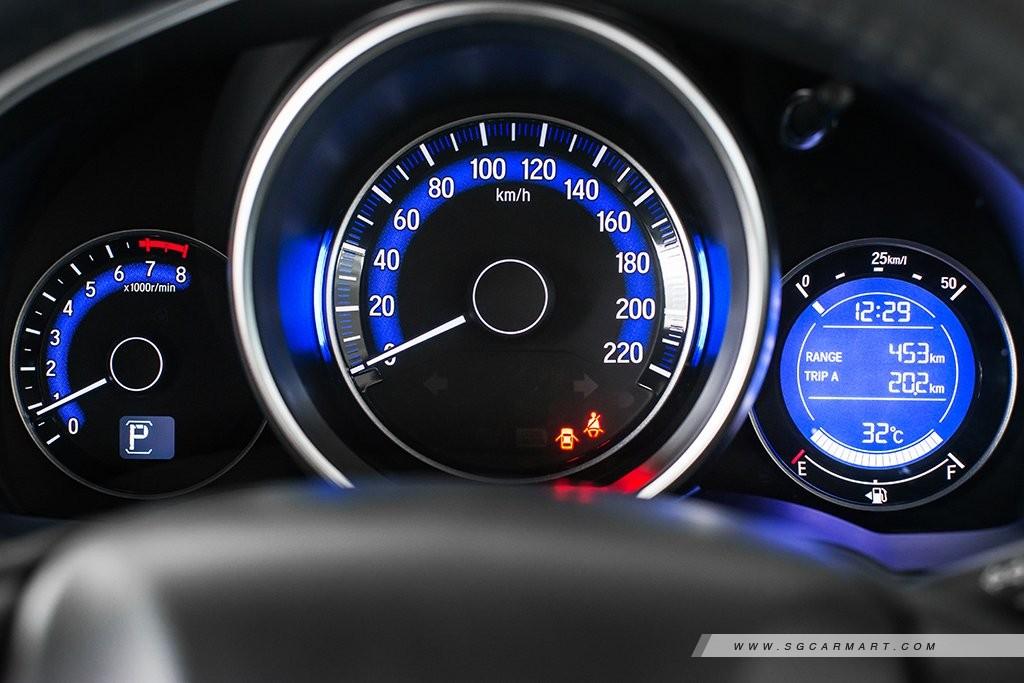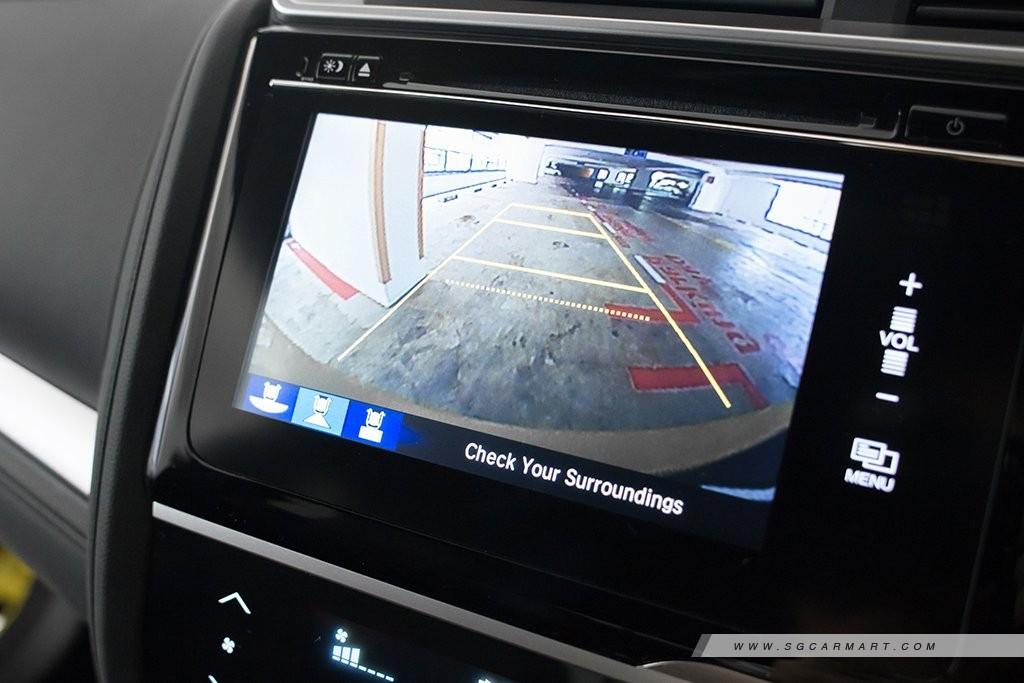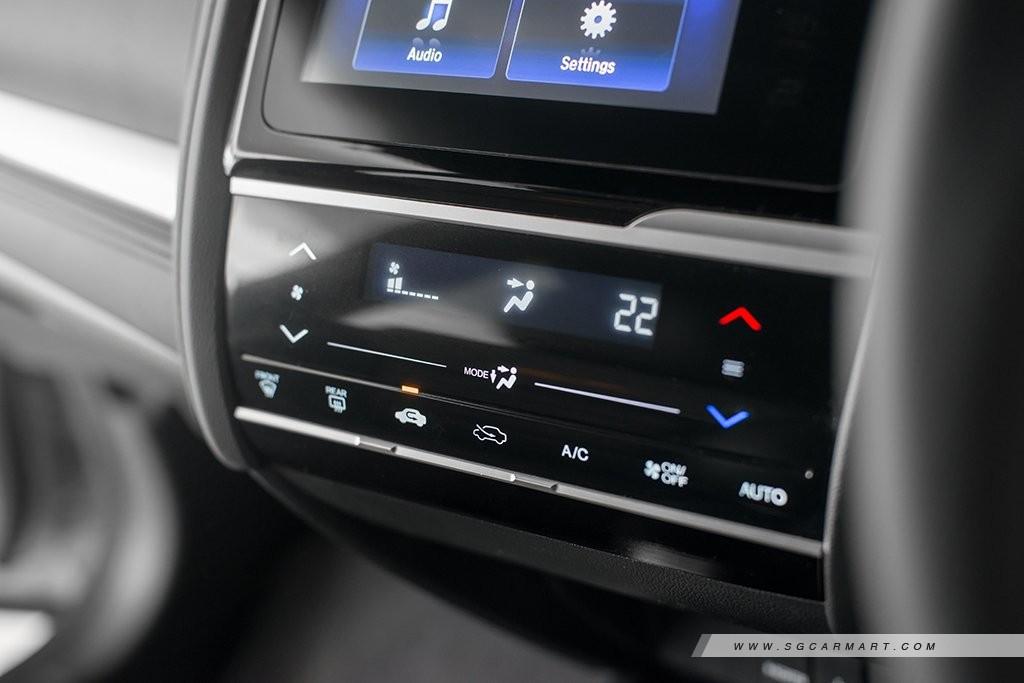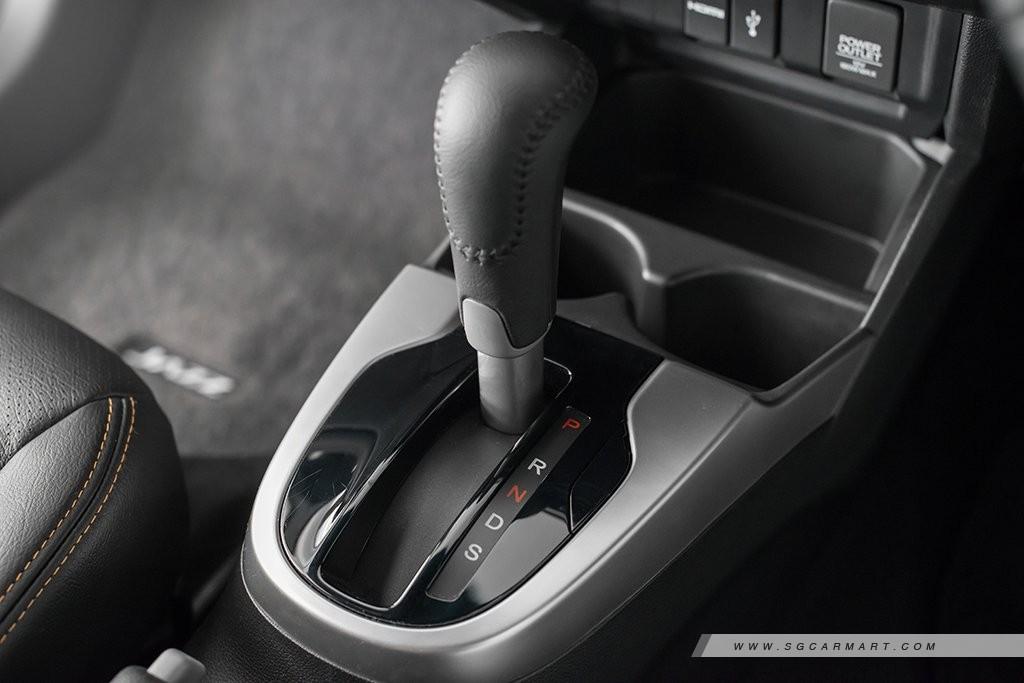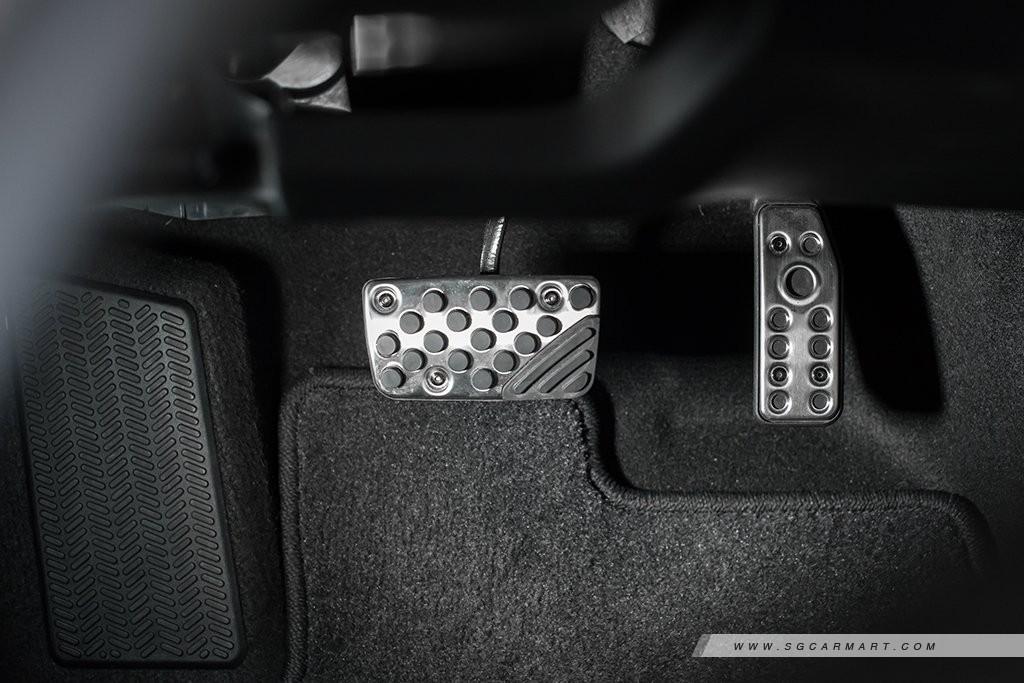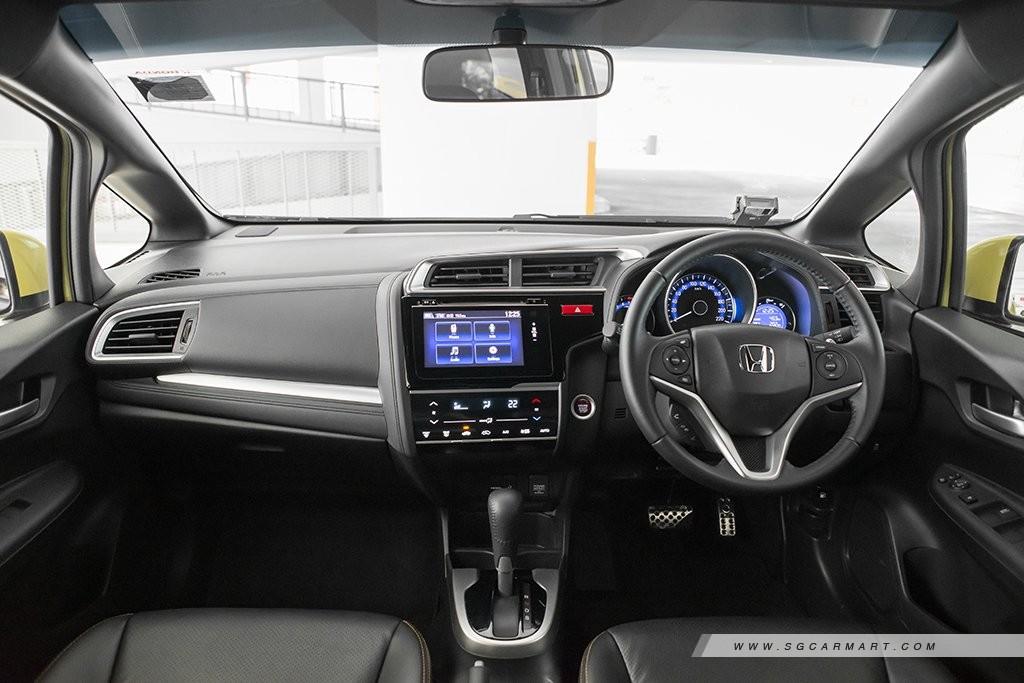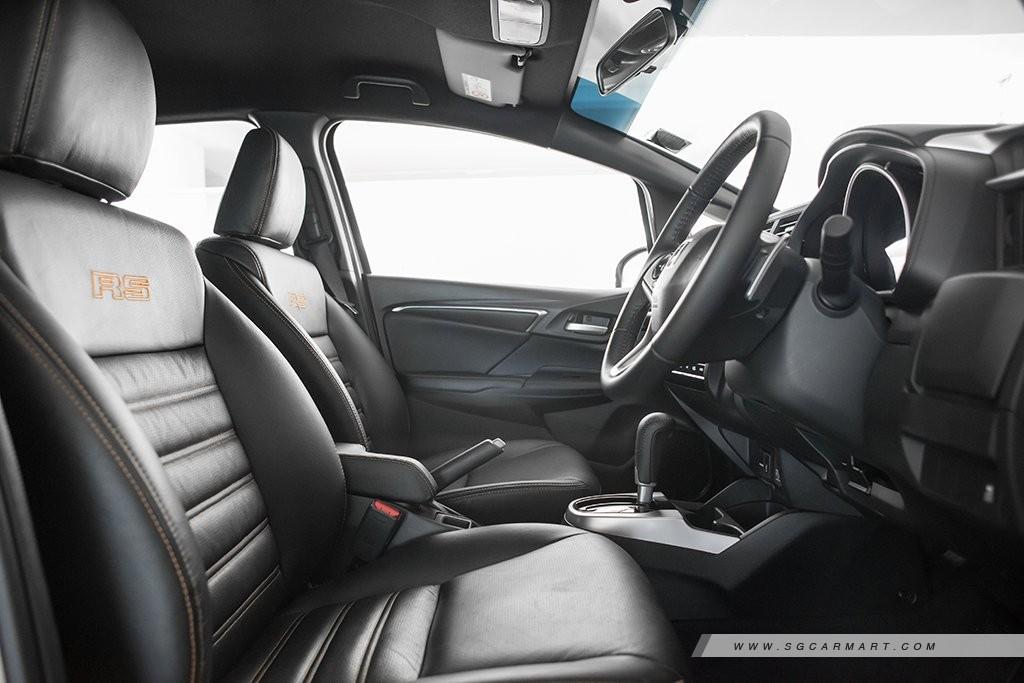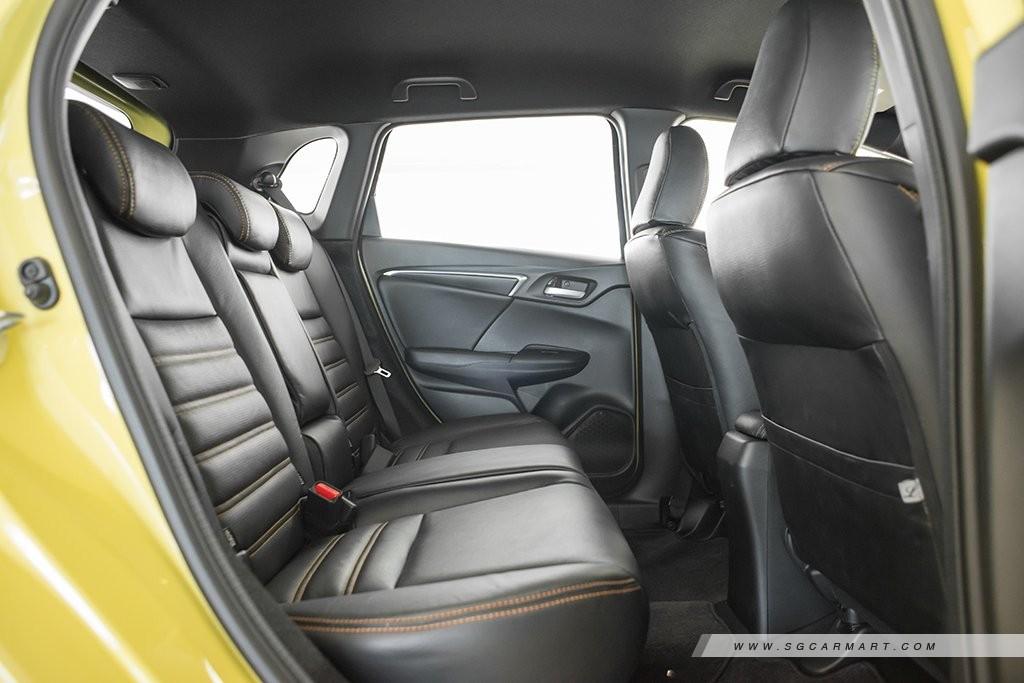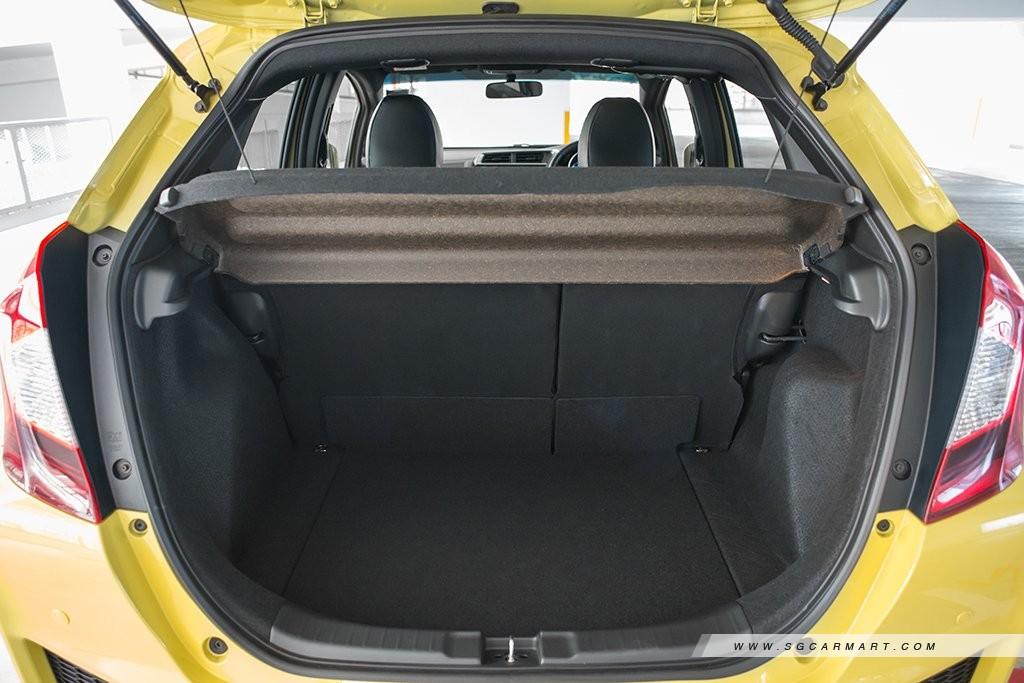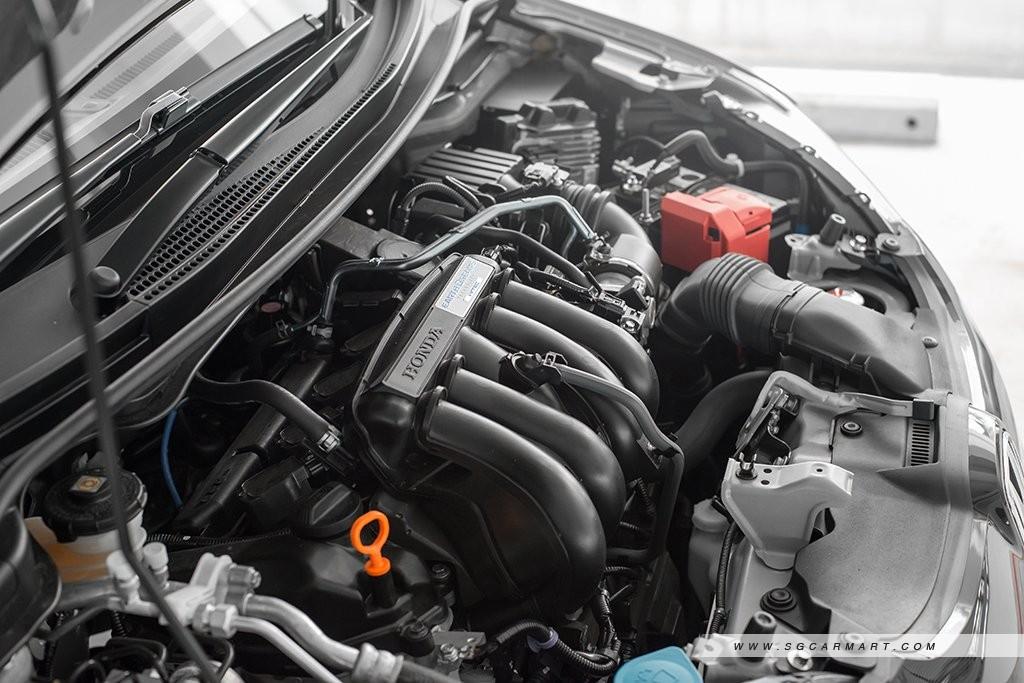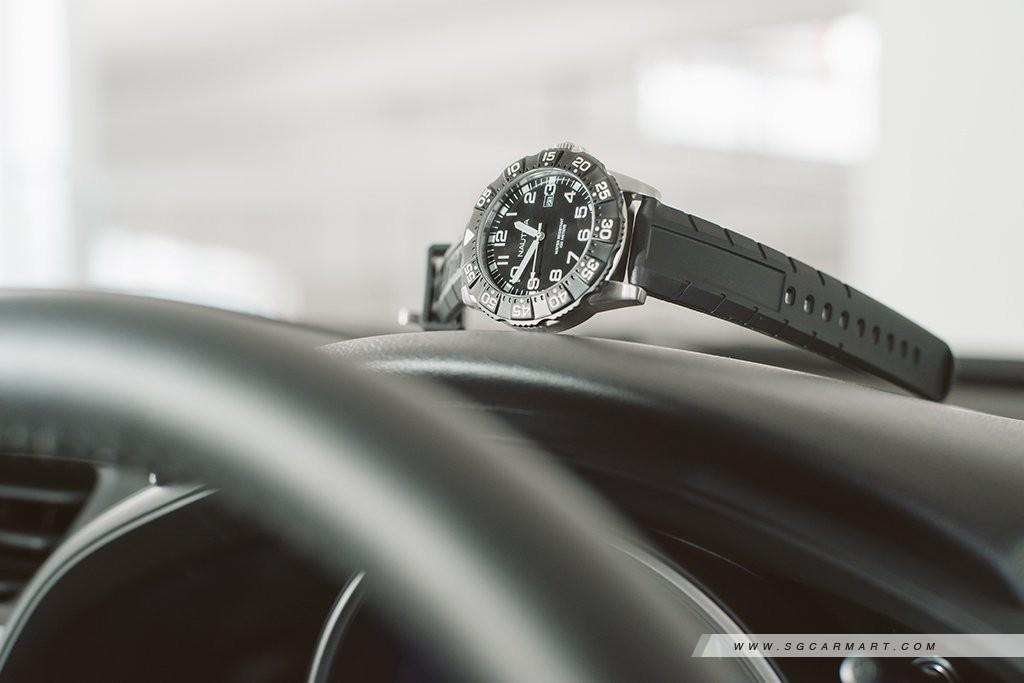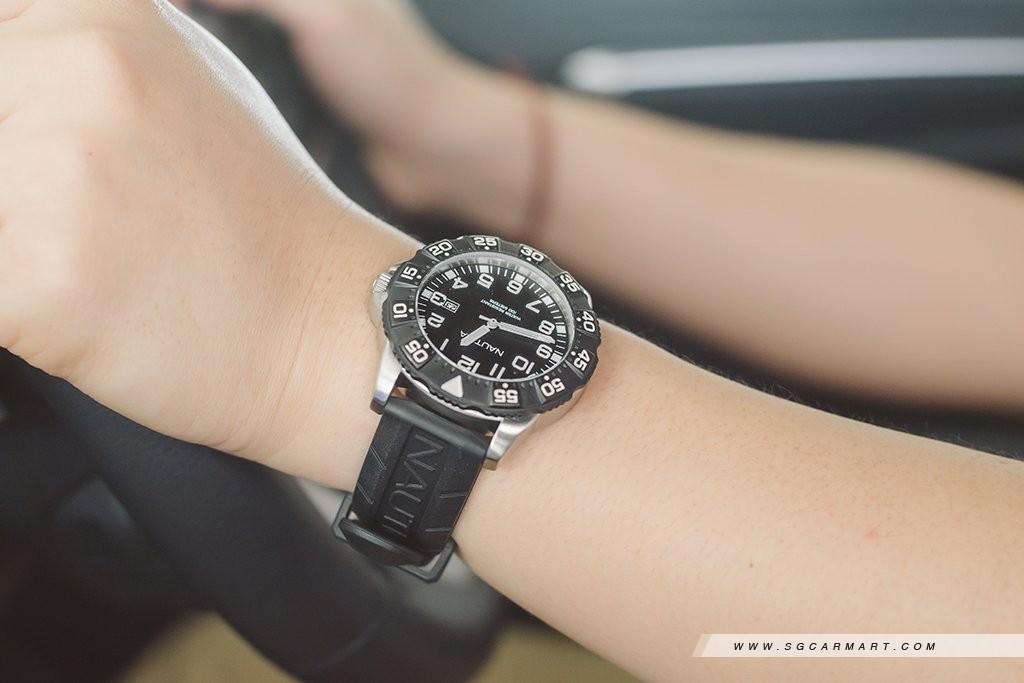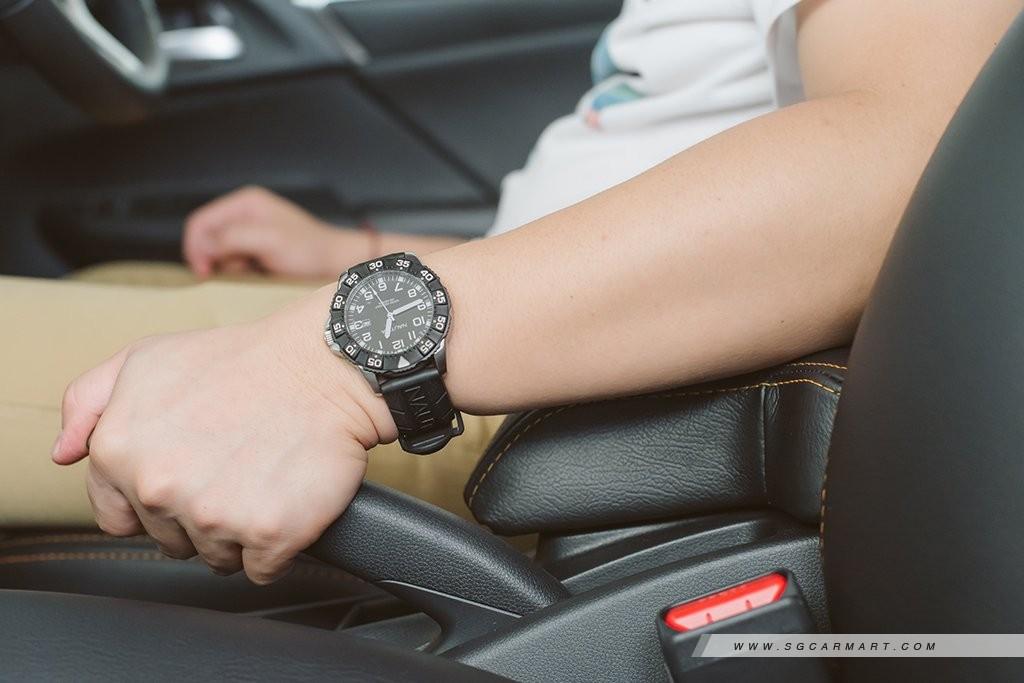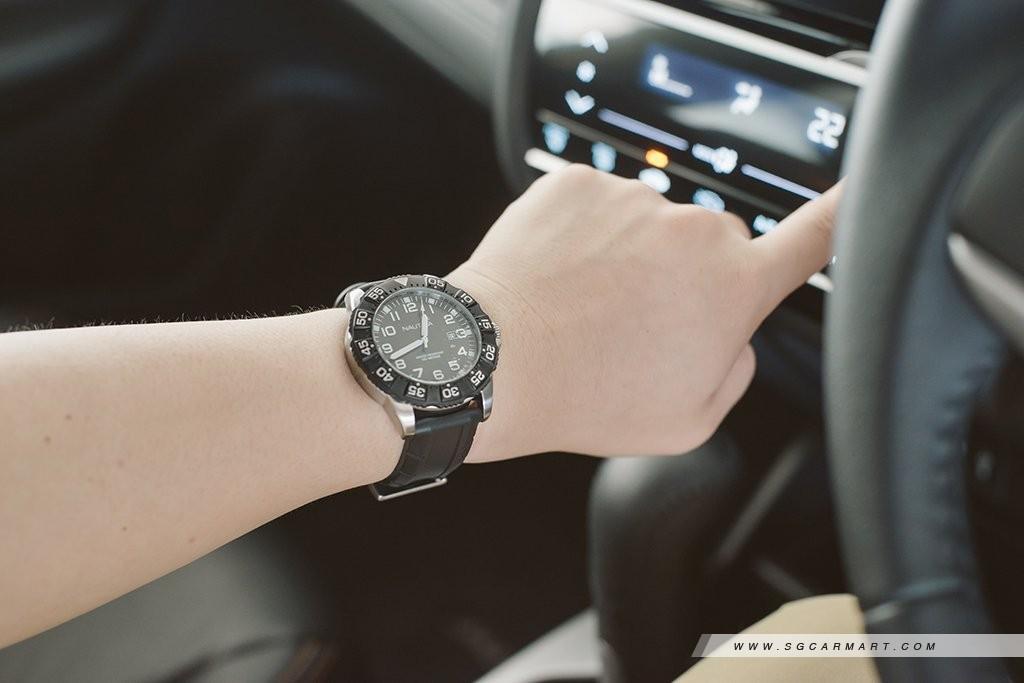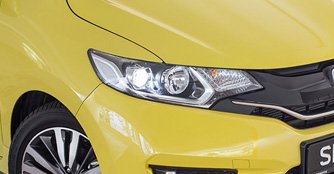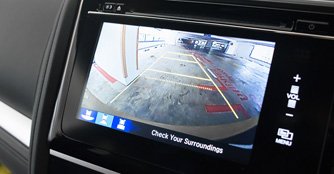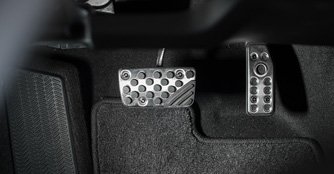Honda Jazz 1.5 RS i-VTEC (A) Review
13 Oct 2014|101,323 views
First introduced in 2001, the Honda Jazz (also known as Fit in some countries or the local Parallel Imported (PI) model) became an immediate hit in Singapore.
The second generation of the car was unveiled six years later and followed in its predecessor's footsteps, achieving great success and also became one of the top compact hatchbacks that roamed around our little island.
Just mid this year, we saw the unveiling of the third iteration of the Jazz, with the new car using an all new platform that is also shared with Honda's upcoming compact crossover HR-V.
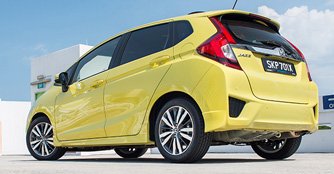
 To top the sporty look off, the Jazz in top-end RS guise here is fitted with an added side sill garnish, rear bumper extension and a rear spoiler
To top the sporty look off, the Jazz in top-end RS guise here is fitted with an added side sill garnish, rear bumper extension and a rear spoiler
Exterior
The prominent Honda badge dominates the centre of Honda's new assertive grille, which is flanked by LED headlights (RS model only), while air intakes below fan out to the sides - giving the Jazz a strong road presence from the front.
The second generation of the car was unveiled six years later and followed in its predecessor's footsteps, achieving great success and also became one of the top compact hatchbacks that roamed around our little island.
Just mid this year, we saw the unveiling of the third iteration of the Jazz, with the new car using an all new platform that is also shared with Honda's upcoming compact crossover HR-V.

Exterior
The prominent Honda badge dominates the centre of Honda's new assertive grille, which is flanked by LED headlights (RS model only), while air intakes below fan out to the sides - giving the Jazz a strong road presence from the front.
 |
Styling is right out of the fun hatchback sketchbook with sharp lines, despite a slab sided look accentuating a sporty profile. Plus, the way the window line sweeps up towards the rear gives the car a little more attitude.
Measuring 3,955mm x 1,694mm x 1,524mm (L x W x H), the new Jazz is only marginally narrower and lower than its predecessor by 1mm respectively. But what the new model has gained significantly is its length - 35mm to be exact - translating to much more space in the cabin.
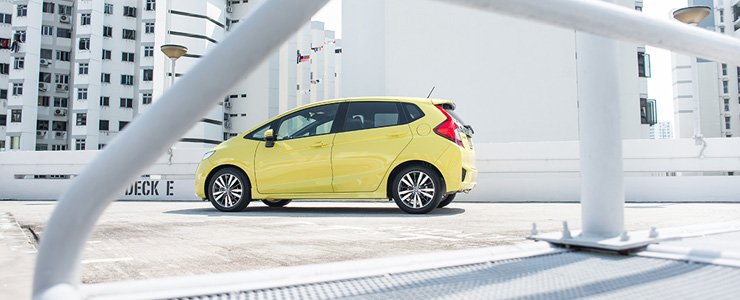 |
Interior
Together with a 30mm wheelbase stretch over the outgoing model, settling into the new Jazz is easier than before. Rear legroom, in particular, is especially generous and may even put some mid-sized sedans to shame.
Right from the start, the Jazz has always had a particular claim to fame - a marvellously flexible interior - and the famed ULTRA seats remain a highlight in the new Jazz.
The intelligent seating solution helps to maximise interior space for accommodating people and all sorts of stuff - from bicycles to potted plants - with four modes of configuration.
At the same time, cargo capacity in the rear has increased as well, from 337 litres in the outgoing model to 363 litres in the new Jazz, ensuring that all luggage and groceries are well taken care of.
Elsewhere in the cabin, Honda has updated the dash for a simpler and neater look replacing the multitude of buttons with the new multimedia system that features a 7.0-inch touchscreen, which is standard across the range.
Yes, hard plastics may be aplenty, but the futuristic-looking dashboard serves as a visual treat and the silver highlights help to break up the otherwise dark interior.
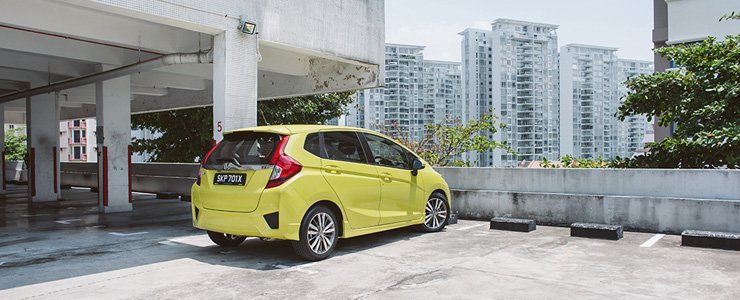 |
The Drive
While the previous 1.5-litre engine in its predecessor was capable of 120bhp and 145Nm of torque, the same lump under the hood of the new Jazz has been revised to produce 8bhp more and 10Nm more torque.
The powerplant is mated to a new Earth Dreams CVT gearbox, and the transmission's wide spread of ratios helps it to be quite punchy off the mark. But like most CVTs, the unit does buzz a little under heavy throttle.

But that's just a small quibble, given that power delivery is refreshingly smooth and the Jazz still pulls willingly even with maximum attendance on board.
The intelligent gearbox also drops the revs down as low as possible when cruising, which helps fuel economy. Our clocked average of 13.8km/L over our test drive isn't quite near Honda's official figure of 18.9km/L, but it's appreciably impressive.
On the road, the new Jazz retains its predecessor's nippy feel and ride control and accentuates it with improved road manners, although one area that can be improved is the cabin insulation from wind and road noise.
With a weight reduction of 40kg over the former model, the zippy city car shows more enthusiasm for twists and turns than its predecessor, changing direction easily but without much body roll. This makes the Jazz very easy and fun to drive, and a very enjoyable one as a city dweller.
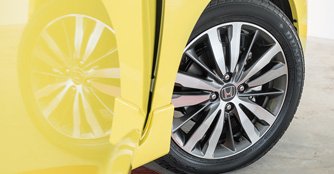
Conclusion
The third generation Honda Jazz continues to deliver the balance of practicality and personality that made the first two generations so lovable.
Together with a new face and some good gear, there shouldn't be a problem seeing the Jazz back in vogue very soon. After all, it is a cool and clever one.
First introduced in 2001, the Honda Jazz (also known as Fit in some countries or the local Parallel Imported (PI) model) became an immediate hit in Singapore.
The second generation of the car was unveiled six years later and followed in its predecessor's footsteps, achieving great success and also became one of the top compact hatchbacks that roamed around our little island.
Just mid this year, we saw the unveiling of the third iteration of the Jazz, with the new car using an all new platform that is also shared with Honda's upcoming compact crossover HR-V.
Exterior
The prominent Honda badge dominates the centre of Honda's new assertive grille, which is flanked by LED headlights (RS model only), while air intakes below fan out to the sides - giving the Jazz a strong road presence from the front.
The second generation of the car was unveiled six years later and followed in its predecessor's footsteps, achieving great success and also became one of the top compact hatchbacks that roamed around our little island.
Just mid this year, we saw the unveiling of the third iteration of the Jazz, with the new car using an all new platform that is also shared with Honda's upcoming compact crossover HR-V.
Exterior
The prominent Honda badge dominates the centre of Honda's new assertive grille, which is flanked by LED headlights (RS model only), while air intakes below fan out to the sides - giving the Jazz a strong road presence from the front.
Styling is right out of the fun hatchback sketchbook with sharp lines, despite a slab sided look accentuating a sporty profile. Plus, the way the window line sweeps up towards the rear gives the car a little more attitude.
Measuring 3,955mm x 1,694mm x 1,524mm (L x W x H), the new Jazz is only marginally narrower and lower than its predecessor by 1mm respectively. But what the new model has gained significantly is its length - 35mm to be exact - translating to much more space in the cabin.
Interior
Together with a 30mm wheelbase stretch over the outgoing model, settling into the new Jazz is easier than before. Rear legroom, in particular, is especially generous and may even put some mid-sized sedans to shame.
Right from the start, the Jazz has always had a particular claim to fame - a marvellously flexible interior - and the famed ULTRA seats remain a highlight in the new Jazz.
The intelligent seating solution helps to maximise interior space for accommodating people and all sorts of stuff - from bicycles to potted plants - with four modes of configuration.
Together with a 30mm wheelbase stretch over the outgoing model, settling into the new Jazz is easier than before. Rear legroom, in particular, is especially generous and may even put some mid-sized sedans to shame.
Right from the start, the Jazz has always had a particular claim to fame - a marvellously flexible interior - and the famed ULTRA seats remain a highlight in the new Jazz.
The intelligent seating solution helps to maximise interior space for accommodating people and all sorts of stuff - from bicycles to potted plants - with four modes of configuration.
At the same time, cargo capacity in the rear has increased as well, from 337 litres in the outgoing model to 363 litres in the new Jazz, ensuring that all luggage and groceries are well taken care of.
Elsewhere in the cabin, Honda has updated the dash for a simpler and neater look replacing the multitude of buttons with the new multimedia system that features a 7.0-inch touchscreen, which is standard across the range.
Yes, hard plastics may be aplenty, but the futuristic-looking dashboard serves as a visual treat and the silver highlights help to break up the otherwise dark interior.
The Drive
While the previous 1.5-litre engine in its predecessor was capable of 120bhp and 145Nm of torque, the same lump under the hood of the new Jazz has been revised to produce 8bhp more and 10Nm more torque.
The powerplant is mated to a new Earth Dreams CVT gearbox, and the transmission's wide spread of ratios helps it to be quite punchy off the mark. But like most CVTs, the unit does buzz a little under heavy throttle.
But that's just a small quibble, given that power delivery is refreshingly smooth and the Jazz still pulls willingly even with maximum attendance on board.
The intelligent gearbox also drops the revs down as low as possible when cruising, which helps fuel economy. Our clocked average of 13.8km/L over our test drive isn't quite near Honda's official figure of 18.9km/L, but it's appreciably impressive.
While the previous 1.5-litre engine in its predecessor was capable of 120bhp and 145Nm of torque, the same lump under the hood of the new Jazz has been revised to produce 8bhp more and 10Nm more torque.
The powerplant is mated to a new Earth Dreams CVT gearbox, and the transmission's wide spread of ratios helps it to be quite punchy off the mark. But like most CVTs, the unit does buzz a little under heavy throttle.
But that's just a small quibble, given that power delivery is refreshingly smooth and the Jazz still pulls willingly even with maximum attendance on board.
The intelligent gearbox also drops the revs down as low as possible when cruising, which helps fuel economy. Our clocked average of 13.8km/L over our test drive isn't quite near Honda's official figure of 18.9km/L, but it's appreciably impressive.
On the road, the new Jazz retains its predecessor's nippy feel and ride control and accentuates it with improved road manners, although one area that can be improved is the cabin insulation from wind and road noise.
With a weight reduction of 40kg over the former model, the zippy city car shows more enthusiasm for twists and turns than its predecessor, changing direction easily but without much body roll. This makes the Jazz very easy and fun to drive, and a very enjoyable one as a city dweller.
Conclusion
The third generation Honda Jazz continues to deliver the balance of practicality and personality that made the first two generations so lovable.
Together with a new face and some good gear, there shouldn't be a problem seeing the Jazz back in vogue very soon. After all, it is a cool and clever one.
Also read our comparison article on:
Honda Jazz 1.5 RS vs Seat Ibiza 1.0 EcoTSI DSG vs Suzuki Swift 1.0Car Information
Honda Jazz 1.5 RS (A)
CAT A|Petrol|18.9km/L
Horsepower
96kW (129 bhp)
Torque
155 Nm
Acceleration
9.6sec (0-100km /hr)
This model is no longer being sold by local distributor
All Used Honda JazzThank You For Your Subscription.
